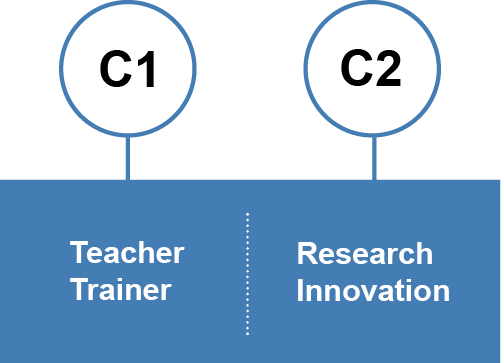Area 3. Teaching and Learning
Digital technologies can enhance and improve teaching and learning strategies in many different ways. However, whatever pedagogic strategy or approach is chosen, the educator’s specific digital competence lies in effectively orchestrating the use of digital technologies in the different phases and settings of the learning process. The fundamental competence in this area – and maybe of the whole framework – is 3.1: Teaching. This competence refers to designing, planning and implementing the use of digital technologies in the different stages of the learning process.
Competences 3.2 to 3.4 complement this competence by emphasizing that the real potential of digital technologies lies in shifting the focus of the teaching process from teacher-led to learner-centred processes, favouring collaboration and progressive autonomy of students. Therefore, these measures must be included in the syllabus, even if no explicit mention is made in their description, since the curricular concretion of the classroom is developed in competence 3.1. Teaching.






3.1 Teaching
Description. To integrate in the syllabus the use of digital technologies, in a creative, safe and critical way to improve the effectiveness of teaching practices. To properly manage and coordinates digital didactic interventions, ensuring the functioning of devices, resources and services during the implementation of the syllabus. To experiment and develop new pedagogical formats and methods for teaching and learning.
3.2 Guidance
Description. To use digital technologies and services, complying with security and data protection measures, to improve individual and collective interaction with students, inside and outside the learning sessions. To use digital technologies to provide relevant and specific guidance and assistance. To experiment and develop new ways and formats to offer guidance and support, respecting the digital rights of all students, and avoiding any type of discrimination or bias.
3.3 Collaborative learning
Description. To select and use secure digital technologies to enhance student learning through collaboration. To provide strategies for students to use digital communication and cooperation technologies in order to enrich learning processes and develop their ability to learn to learn among peers.
3.4 Self-regulated learning
Description. To use digital technologies to promote metacognition in students, through reflection on their own learning and the development of strategic actions to plan, supervise, contrast ideas, request help, and document the learning processes carried out.
